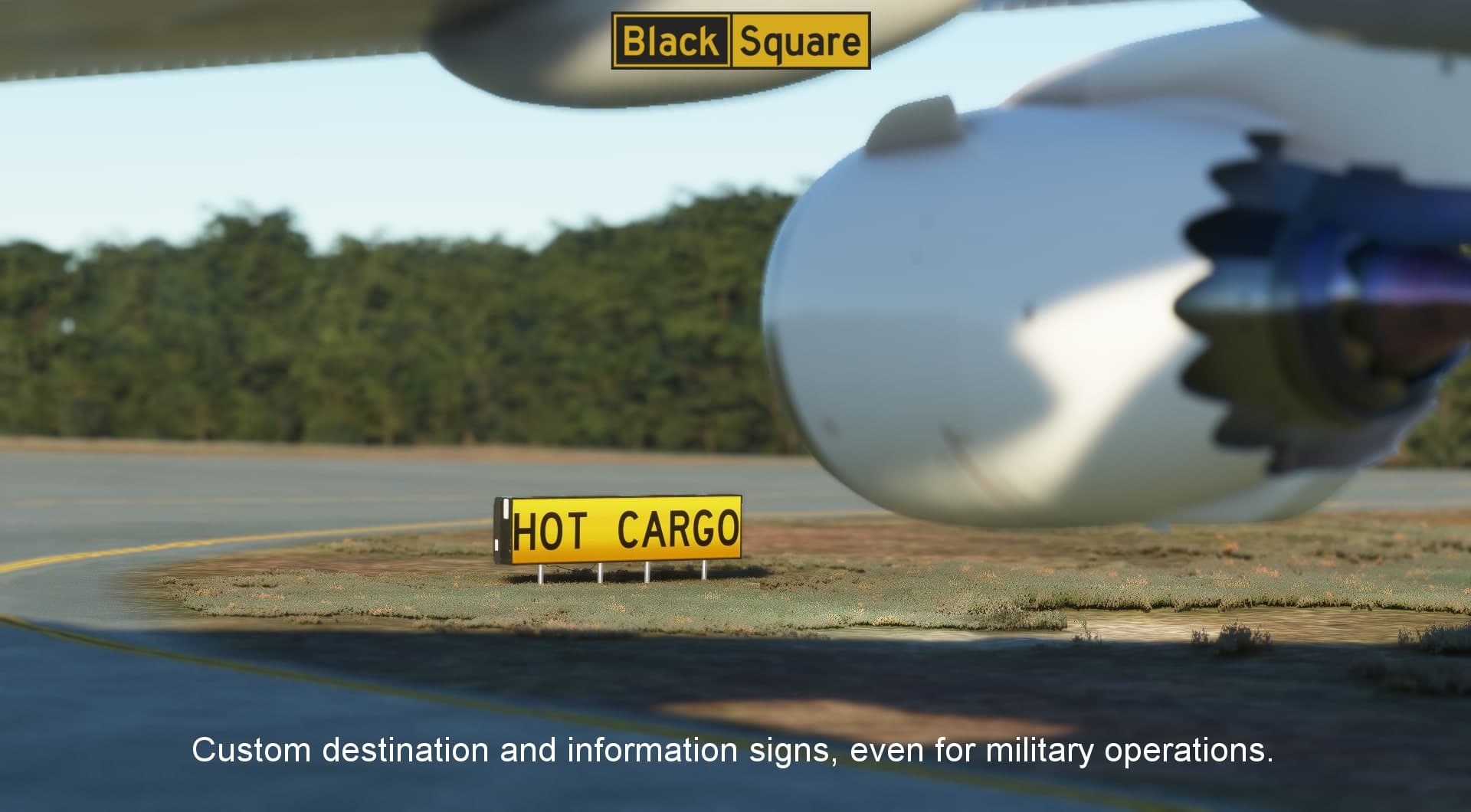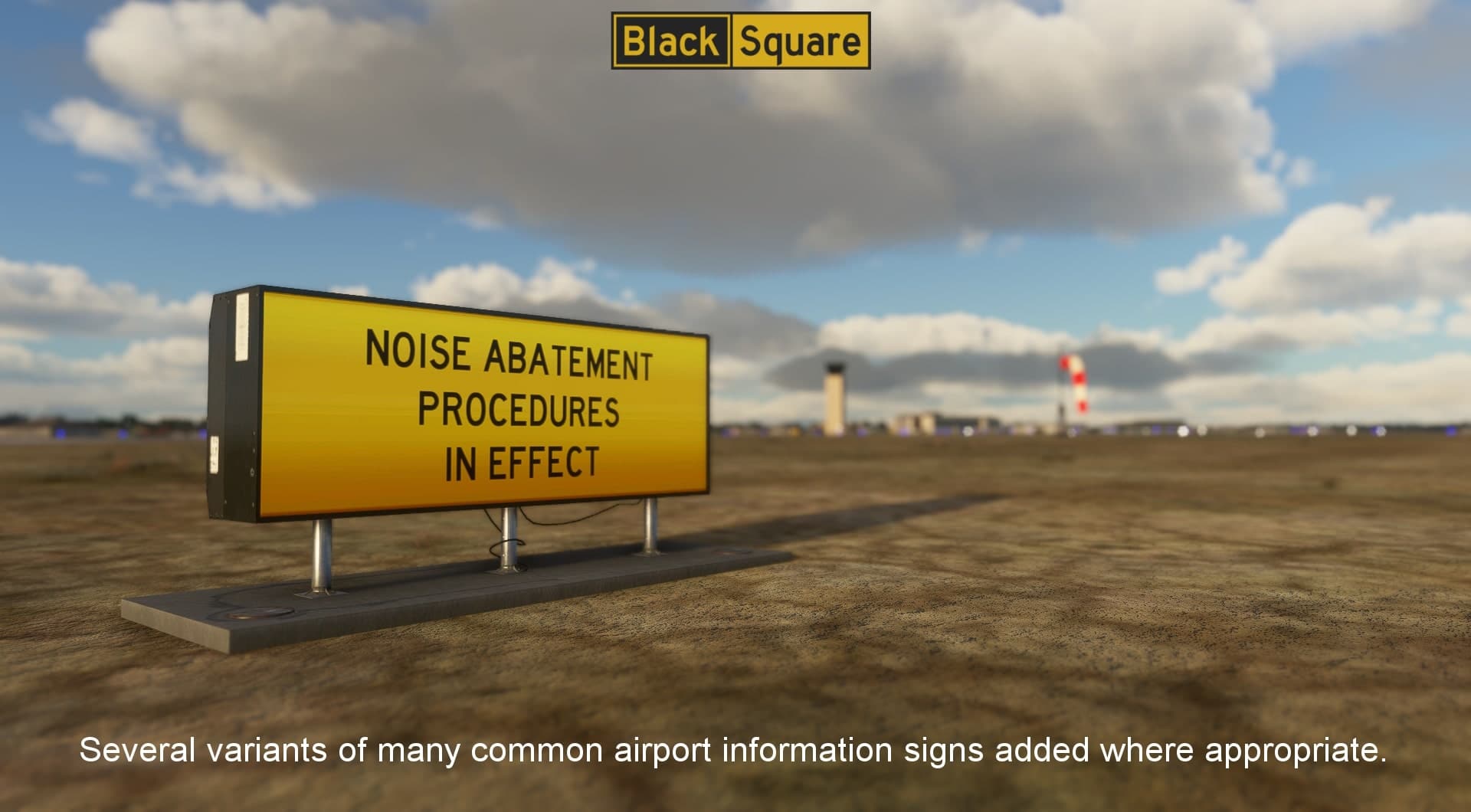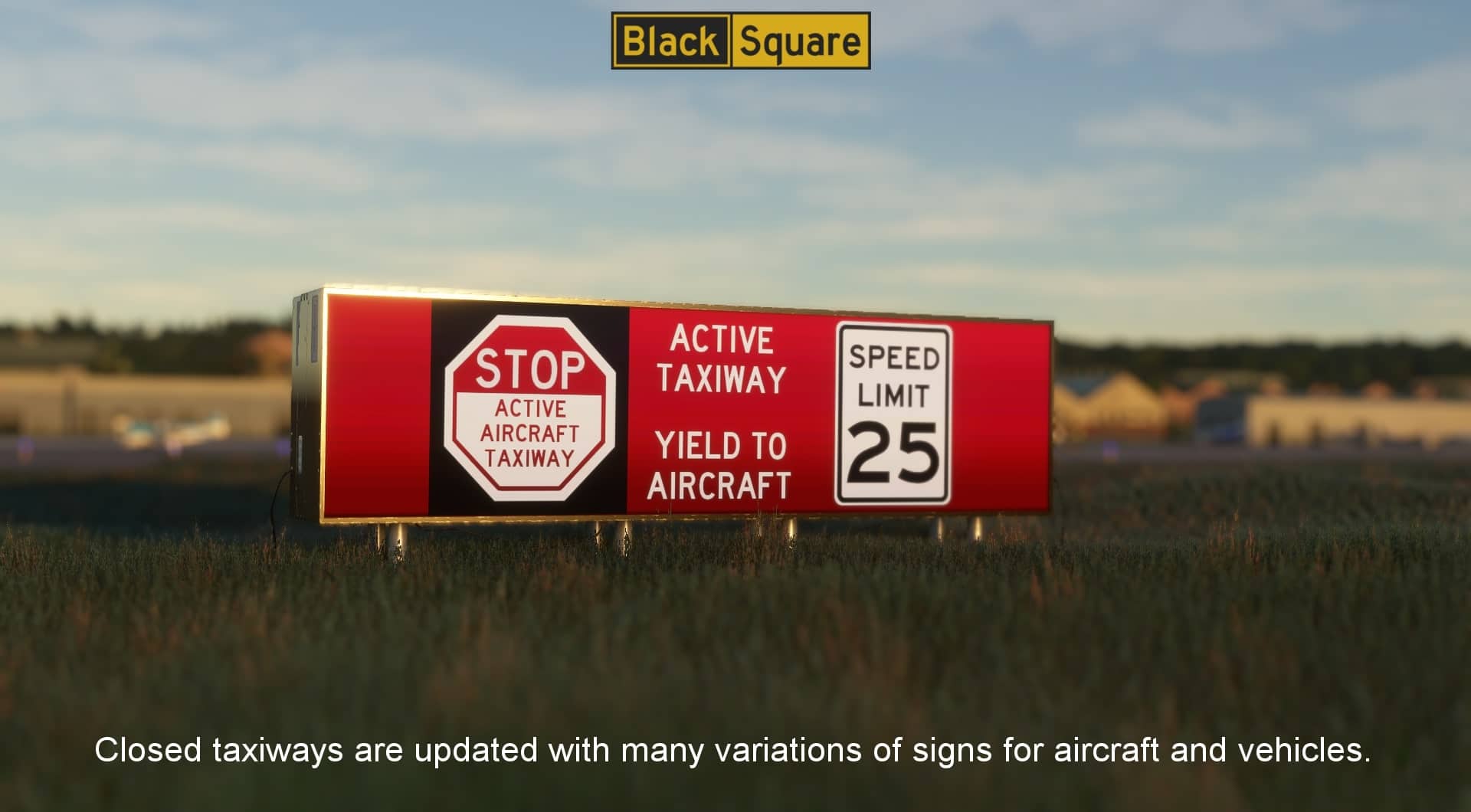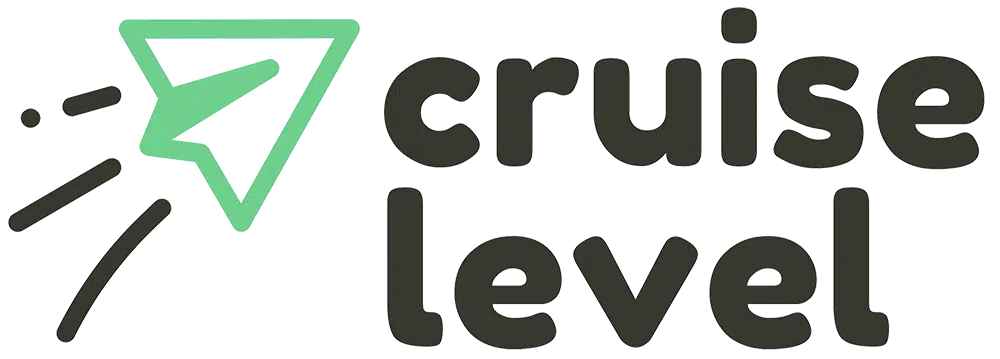Taxiway-Lampen mitten auf dem Vorfeld, falsche Schilder oder Markierungen – der Standard-Sim kann an vielen Plätzen für optische Ungereimtheiten sorgen. Hier will Just Flight jetzt mit einem Add-On nachbessern, das die Taxiway-Schilder und Bodenmarkierungen auf fast allen US-Airports realistisch ersetzt.
„Real Tayiways United States – Class C & D Airports“ wurde jetzt von Just Flight angekündigt und hat dafür eine informationsreiche Preview-Seite erhalten. Dort beschreiben die Entwickler, was das Add-On MSFS-Fans bringen soll: Korrekte Bezeichnung dort, wo sie auch in der Realität zu finden sind, analog zu Charts. Gleichzeitig sollen auch die oft falsch platzierten, blauen Randlichter der Rollwege verschwinden – oft sind diese auf dem Vorfeld oder mitten auf Taxiways zu finden. „Real Taxiways“ wird laut Just Flight fast alle US-Airports abdecken. 38 große US-Airports fehlen im Paket, diese fallen dementsprechend unter Kategorie B. Einen Preis oder Release-Zeitpunkt für das Add-On verrät Just Flight an dieser Stelle noch nicht.
Added sign types
- ILS hold
- ILS critical area
- Runway safety area
- Runway approach hold
- Destination
- Information
- Runway distance remaining
- Noise abatement
- Movement area
- Run-up areas
- End of taxiway
- Special location
- No entry
- Vehicle entry
New textures
- All signs
- Runway entry markings
- All painted lines
- Dark sign backs
- Distressed runway markings
For pilots and aspiring pilots
Real Taxiways aims to provide the best airport operations environment for virtual pilots looking to improve their proficiency, and for aspiring pilots learning the challenges of ground operations for the first time, by simulating the accurate placement of taxiway signs of all types and sizes that would reasonably be found at real airports around the world.
Users should find that airports covered by Real Taxiways regions are now navigable via real-world airport diagrams, the signs on the ground, most external moving-map programs and ATC instructions.
Truly unique experiences
In the real world, no two airports are the same. Default airports in Flight Simulator have always been too rigid and identical, and add-on airports lack the consistency of the real world. Each Real Taxiways airport has a ‚personality‘ generated for it, which dictates sign size, type, placement and variations used, as well as other parameters. Since these variations are applied on a runway-by-runway basis, there are so many possible combinations that almost every airport feels unique. This ‚personality‘ may even vary from one side of the airport to another.
Coverage
The whole United States area, including Alaska and Hawaii, is covered by this add-on, but not the protectorates and outlying islands.
Class C & D airports
Class C and D airports include all towered airports in the United States except the 37 largest, which are Class B airports. Class C and D airports range in size from local airfields with a single runway, to large regional airports with expansive terminals, runways, and services which serve some of the largest population centres in North America; this is around 450 airports.





